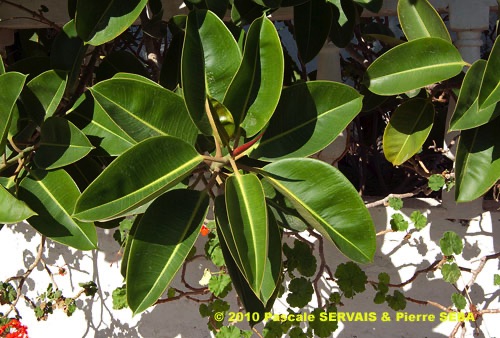
Ficus elastica Roxb. ex Hornem.
Fam. : Moraceae
© Pascale SERVAIS & Pierre SEBA, 2018. Tilo Botanica: Flore de Tilos et du Dodécanèse / Flora of Tilos and of the Dodecanese
English translation by Brenda Bradbury, Howard Bradbury and Stéphane Léonard
Arbre monoïque, à racines aériennes, à rameaux glabres, sécrétant un latex toxique blanc quand on les coupe. Plante originaire d’Asie.
Feuilles alternes, simples, elliptiques à ovales, entières, coriaces, lustrées, persistantes, vert sombre, mucronées, pétiolées, de 10 à 35 cm de long et de 5 à 17 cm de large, à nervure centrale plus claire.
Fleurs à symétrie radiaire, minuscules, mâles et femelles réunies à l’intérieur d’un réceptacle jaune verdâtre, creusé d’une cavité qui n’est ouverte dans sa partie supérieure que par un orifice étroit muni d’écailles. Les fleurs tapissent la paroi interne de cette cavité et apparaissent à longueur d’année à l’aisselle des feuilles. Ovaire supère.
Fruits petits et nombreux inclus dans le réceptacle de 1 à 2 cm de long, vert jaune, qui devient charnu après la fécondation assurée par une petite espèce de guêpe.
___________________________
Tree monoecious, with aerial roots, with glabrous branches, releasing a white toxic latex when cut. Plant native to Asia.
Leaves alternate, simple, elliptic to ovate, entire, tough, bright, persistent, dark green, mucronate, petiolate, from 10 to 35 cm long and from 5 to 17 cm across, with a little paler central vein.
Flowers radially symmetrical, tiny, male and female joined together inside a greenish yellow receptacle, with a cavity which is open in its upper part only by one narrow opening provided with scales. The flowers line the internal wall of this cavity and appear throughout the year at the axil of the leaves. Ovary superior.
Fruits small and numerous, included in the receptacle from 1 to 2 cm long, yellow green, which becomes fleshy after the pollination ensured by a small species of wasp.
Descripteurs / Identifying features
1
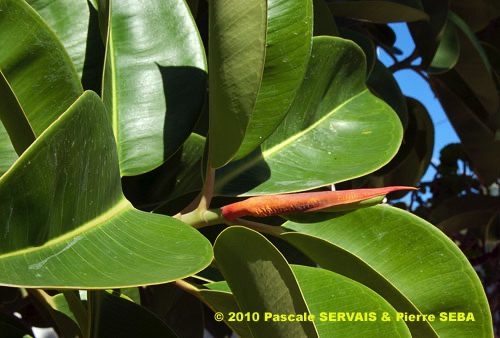
2
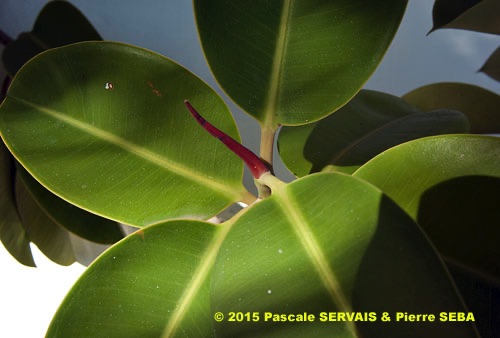
3
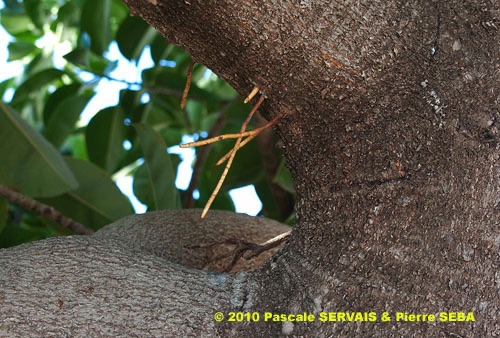
4
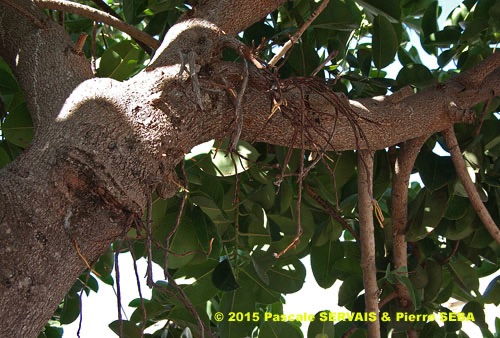
5
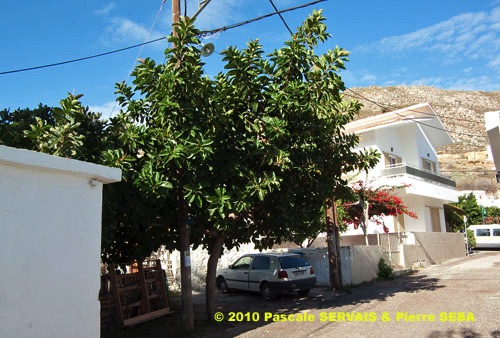
6
Étymologie / Etymology :
Ficus : emprunt du latin ficus, -us / -i (nom) = le figuier.
Elastica : nom créé par William Roxburgh (1751-1815), chirurgien et
botaniste écossais, qui a décrit les propriétés de l'extrait de cette
plante: le caoutchouc naturel.
Ficus : borrowed from Latin ficus, -us / -i (noun) = fig tree.
Elastica : name created by William Roxburgh (1751-1815), Scottish
surgeon and botanist, who described the properties of the extract of
this plant: natural rubber.
Synonymes / Synonyms :
Ficus belgica Hort.
Ficus rubra Hort.
Noms vernaculaires / Common names :
Noms français / French names :
Arbre à caoutchouc — Caoutchouc — Figuier caoutchouc —
Figuier élastique.
Nom grec / Greek name :
Συκιά.
Noms anglais / English names :
Assam rubber — Caoutchoue tree — Ficus — India rubber tree —
Indian rubber bush — Ornamental rubber tree — Rubber bush —
Rubber fig — Rubber plant — Rubber tree.
Nom allemand / German name :
Gummibaum.
Noms espagnols / Spanish names :
Árbol de caucho — Gomero — Higuera cauchera —
Higuera de la India — Higuera elástica — Planta del caucho.
Noms italiens / Italian names :
Fico del caucciù — Fico indiano.
Habitat :
Jardins.
Gardens.
Îles / Islands :
Rhodos - Tilos.
Hauteur / Height range :
De 2,50 m à 10 m.
From 2.50 m to 10 m.
Floraison / Flowering time :
De janvier à décembre.
From January to December.
Groupe / Classification :
Dicotylédones.
Dicotyledons.
Pérennité / Lifespan :
Vivace.
Perennial.
Description :
Clés dichotomiques et descripteurs distinctifs des 3 espèces / Dichotomous keys and distinctive identifying features of the 3 species
Photo 1 :
Localisation / Location : Tilos, Livadia, Village
Date : 25/11/2010
GPS : Lat. 36,41722° N / Long. 27,38546° E / Alt. 4 m
Type : Photographie numérique / Digital Photograph (10 mégapixels)
Photo 2 :
Localisation / Location : Tilos, Livadia, Village
Date : 25/11/2010
GPS : Lat. 36,41722° N / Long. 27,38546° E / Alt. 4 m
Type : Photographie numérique / Digital Photograph (10 mégapixels)
Photo 3 :
Localisation / Location : Tilos, Livadia, Village
Date : 25/11/2010
GPS : Lat. 36,41722° N / Long. 27,38546° E / Alt. 4 m
Type : Photographie numérique / Digital Photograph (10 mégapixels)
Photo 4 :
Localisation / Location : Tilos, Livadia, Village
Date : 25/11/2010
GPS : Lat. 36,41546° N / Long. 27,38531° E / Alt. 4 m
Type : Photographie numérique / Digital Photograph (10 mégapixels)
Photo 5 :
Localisation / Location : Tilos, Livadia, Village
Date : 25/11/2010
GPS : Lat. 36,41546° N / Long. 27,38531° E / Alt. 4 m
Type : Photographie numérique / Digital Photograph (10 mégapixels)
Photo 6 :
Localisation / Location : Tilos, Livadia, Village
Date : 25/11/2010
GPS : Lat. 36,41546° N / Long. 27,38531° E / Alt. 4 m
Type : Photographie numérique / Digital Photograph (10 mégapixels)

Google Maps
Google Maps
Google Maps
Google Maps
Google Maps
Google Maps